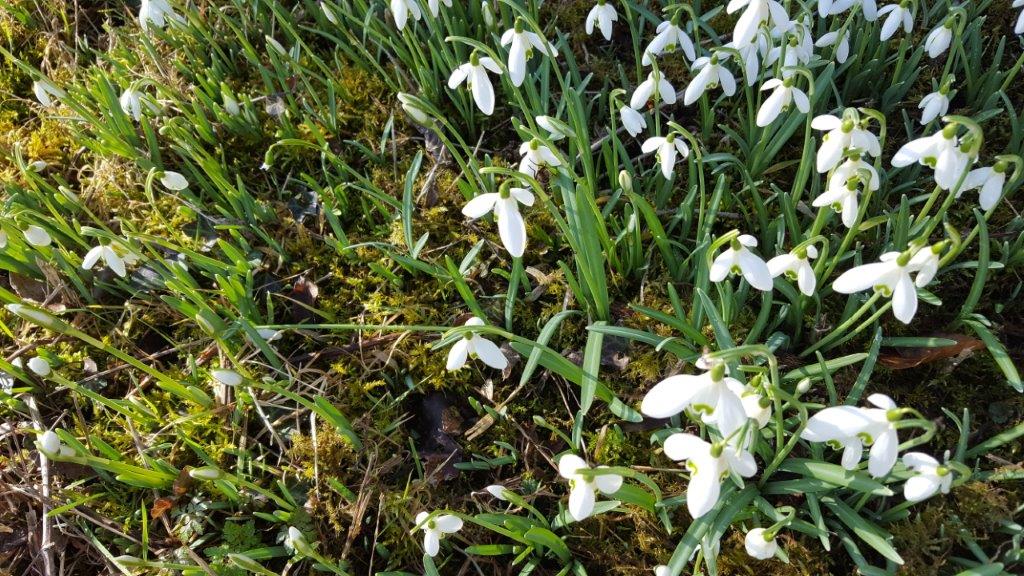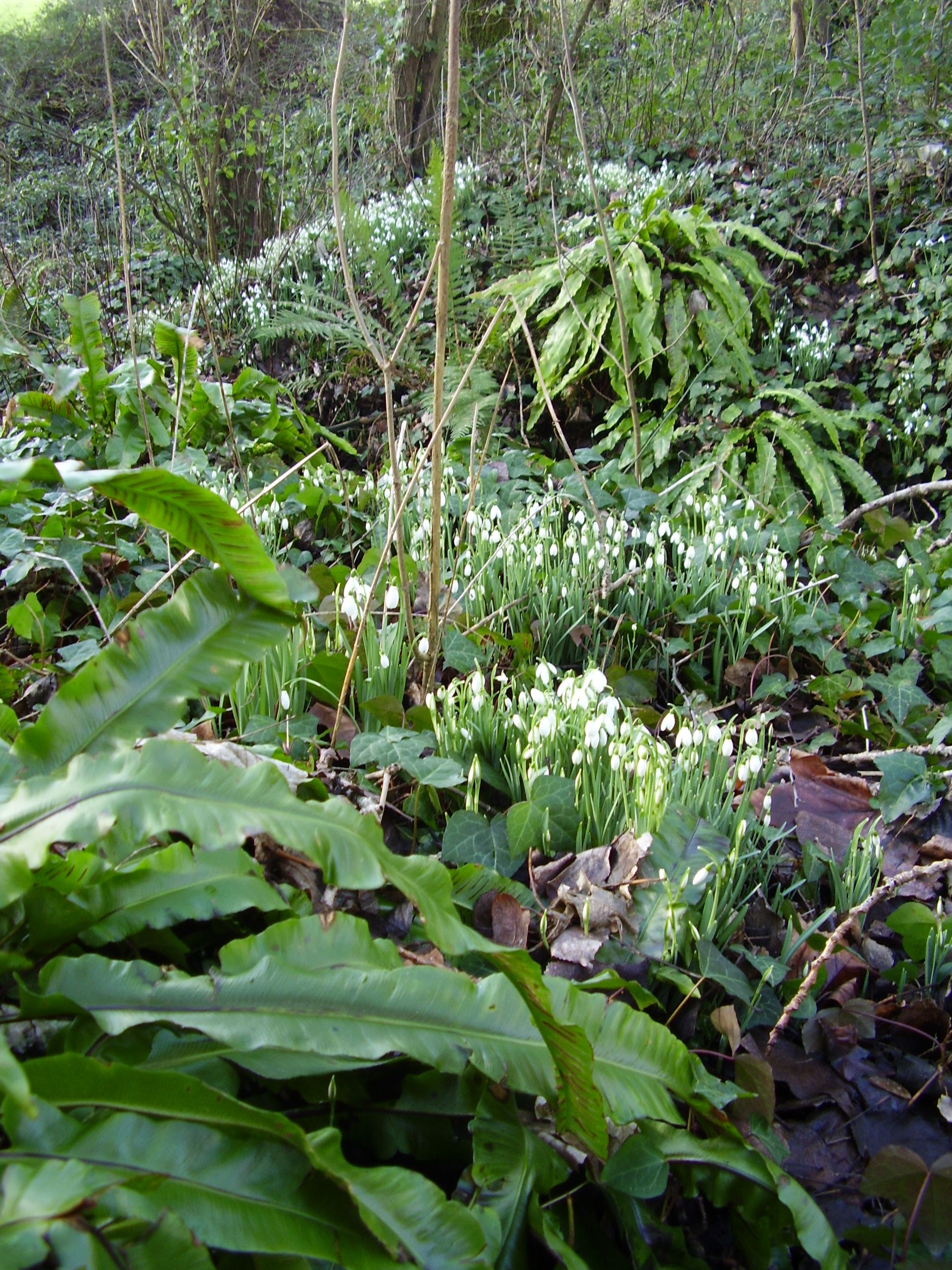The delicate white, gently drooping flowers of the snowdrop are a sure sign that winter’s lifeless grip is weakening. A surge of optimism often accompanies one’s first sighting of these flowers in the new year, which are growing on damp or frozen ground in traditional orchards, field and woodland edges, and in gardens around Binsted.

Its serene and graceful appearance belies its sheer tenacity and resilience, for its narrow understated leaves have hardened tips for breaking through wintry, icy ground and, whilst growing, the fragile flower is protected by a papery sheath. When found en masse the subtle honey-scented fragrance may be faintly perceived, for this is the smell of nectar produced to attract bees for cross-pollination. Bees with their woolly coats are the first insects to be venturing out early in the year; but even their visits cannot be deemed reliable should very cold conditions prevail.
However, trial and error over long periods of time – otherwise known as evolution – has resulted in an alternative strategy for reproduction. Beneath the ground the bulb divides effectively creating a clone of the original. This may not create a new genetic mix but it does increase numbers and so, in clement years when bees are operating to full capacity, many cross-pollinated seeds can be produced.
Our Binsted snowdrop - see photo - is Galanthus nivalis and is found throughout much of Europe. Derived from Greek, Galanthus means ‘milk flower’ and nivalis ‘resembling snow’. In the past there have been heated arguments as to whether it is native or not, for the first records of it growing in the wild are as late as 1778, and yet it is known in cultivation from 1597. Lately, those who decide upon such matters have come to a broad consensus that it is a neophyte or ‘newcomer’. Nevertheless, since 1597 there have been countless newcomers, for hundreds of cultivars have been created for a growing band of steadfast snowdrop collectors; some of whom will part with significant sums of hard-earned cash for a single bulb – over £150 is not uncommon. Such enthusiasts are known as galanthophiles after the Latin name.
Whatever price a galanthophile is willing to pay, the inspiration must most surely be the serene and simple beauty of the year’s first life emerging from the unforgiving clasp of the cold ground.

